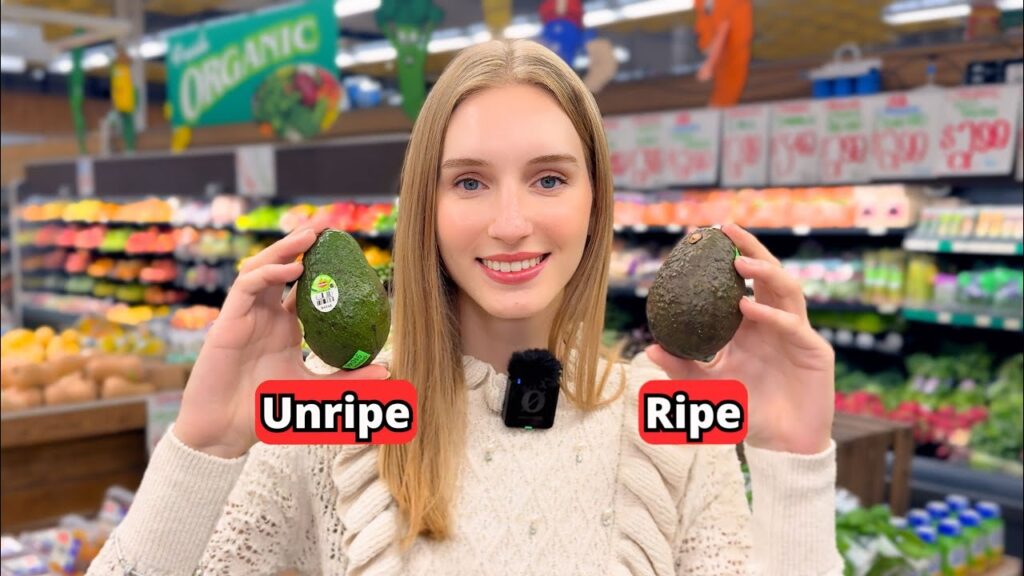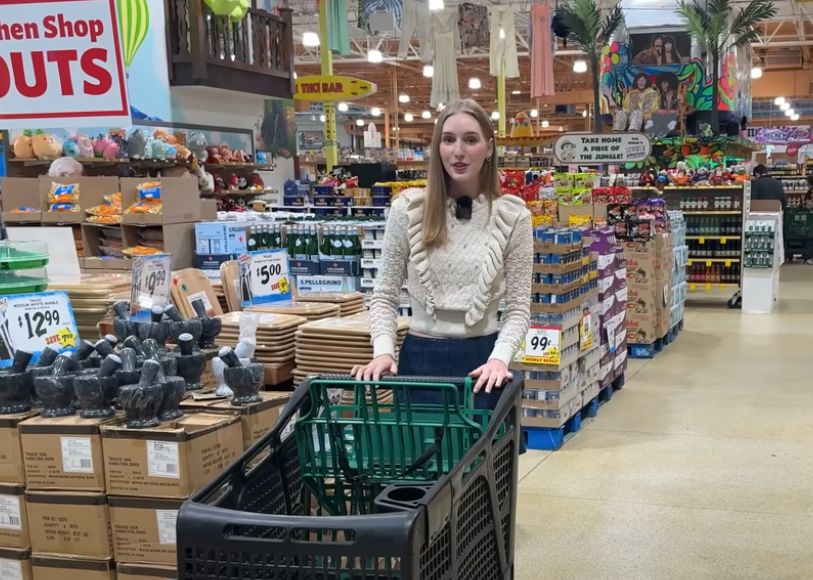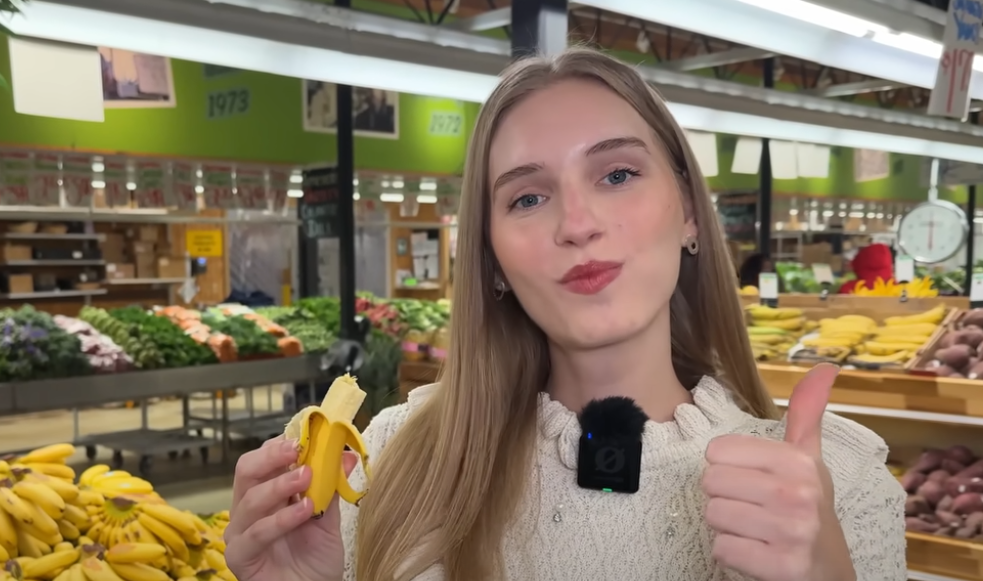(A 1000-word English practice story and lesson)
Grocery shopping might seem like a simple task, but doing it with your English teacher? Now that’s a lesson packed with vocabulary, real-life conversation, and some unexpected fun. In this advanced-level English practice piece, we’ll take a trip through the aisles, exploring food vocabulary, common expressions, cultural tips, and useful dialogue along the way. Whether you’re preparing for life in an English-speaking country or just want to improve your fluency, this story will help you learn how to shop and speak with confidence.

1. Meeting at the Supermarket
It was a sunny Saturday morning when you met your English teacher, Mr. Thompson, at the local supermarket.
“Ready to practice your English in the real world?” he asked with a grin.
You nodded eagerly. “Yes, let’s do it. I’ve never gone shopping in English before.”
“Perfect,” he said. “Let’s grab a cart and get started. Today, you’ll be doing the talking.”
The moment the cart’s wheels rolled through the automatic doors, your lesson began.
2. Starting in the Produce Section
Your first stop was the produce section. Bright fruits and fresh vegetables filled the shelves: apples, bananas, spinach, cucumbers, tomatoes, and more.
“Let’s start by describing what you see,” Mr. Thompson said.
You looked around and said, “There are ripe bananas, fresh strawberries, and a big pile of green bell peppers.”
“Great,” he said. “Now ask me a question about fruit.”
You thought for a moment. “Which fruit is in season now?”
Mr. Thompson smiled. “Nice question! Right now, berries are in season—blueberries, raspberries, blackberries. That means they’re fresh and cheaper than usual.”
You picked up a bag of apples. “How do I say this is too expensive?”
“Try saying: ‘This seems a bit pricey’ or ‘Do you have anything more affordable?’” he replied.

3. Learning Food Vocabulary
Next, you moved to the dairy section. The cold air made you shiver a bit as you walked past shelves of milk, cheese, butter, and yogurt.
You held up a container. “What’s the difference between ‘low-fat’ and ‘non-fat’?”
Mr. Thompson explained: “Low-fat means it has some fat, just reduced. Non-fat means it has no fat at all.”
“Got it. And what’s the meaning of ‘organic’?”
“Organic means it was made without artificial chemicals, pesticides, or hormones. Usually healthier, but more expensive.”
Then came more food-related questions:
- What does “past its expiry date” mean?
- What’s the difference between “whole milk” and “skim milk”?
- How do you say you want sliced cheese at the deli?
Each aisle turned into a classroom, and every product label became a vocabulary lesson.
4. Aisle Conversations and Idioms
As you walked through the snack aisle, Mr. Thompson paused near the potato chips.
“Here’s a fun idiom,” he said, holding up a bag. “To be a couch potato means someone who spends a lot of time watching TV and doing nothing.”
You laughed. “So, if I eat these chips all weekend, I become a couch potato?”
“Exactly,” he said, chuckling.
In the canned goods aisle, he pointed to a row of baked beans. “Another idiom: spill the beans. It means to reveal a secret.”
“Like, ‘Don’t spill the beans about the surprise party’?”
“Perfect!”
Everyday expressions like bring home the bacon, in a pickle, and cry over spilled milk all found their way into your shopping trip. Each one was tied to food, making it easier to remember.

5. Asking for Help in English
Halfway through the trip, you needed to find olive oil. You saw a store employee and turned to Mr. Thompson.
“Practice time,” he whispered. “Go ahead, ask her where it is.”
You took a deep breath and said, “Excuse me, could you tell me where the olive oil is?”
The employee smiled and pointed down the aisle. “Aisle five, on the left side, next to the vinegar.”
You thanked her, then turned back to Mr. Thompson.
He nodded. “Nice job. Always polite, always clear. Try to remember phrases like:”
- “Excuse me, I’m looking for…”
- “Could you help me find…”
- “Where can I find the…”
You repeated them out loud as you walked. “Excuse me, I’m looking for the spices.”

6. Making a Shopping List in English
Later, you paused by the bakery. The smell of fresh bread filled the air. Mr. Thompson said, “Let’s check your vocabulary. Can you name everything you bought so far?”
You looked in the cart and listed:
“Apples, yogurt, cheddar cheese, multigrain bread, peanut butter, and a bag of carrots.”
“Excellent! Now try writing a short shopping list for next week.”
You pulled out your phone and typed:
- Chicken breasts
- Broccoli
- Orange juice
- Cereal
- Eggs
- Toothpaste
“Good mix of food and personal care items,” Mr. Thompson said. “Don’t forget: grocery stores sell more than food. You can also buy soap, cleaning products, batteries, even medicine.”
7. Checking Out and Small Talk
At the checkout counter, you unloaded your groceries. The cashier smiled and said, “Hi there, did you find everything okay?”
You nodded. “Yes, thank you.”
As she scanned your items, she made small talk. “It’s getting hot out there, huh?”
You responded, “Yes, summer is definitely here.”
Mr. Thompson whispered, “Small talk like this is very common. Weather, holidays, sports—safe, light topics.”
You paid with your card, bagged your groceries, and thanked the cashier again.

8. Reviewing the Lesson
As you walked outside with your teacher, bags in hand, he turned to you.
“So, what did we learn today?”
You smiled and said:
- “I practiced asking questions and making conversation.”
- “I learned food-related idioms and expressions.”
- “I understood how to ask for help and talk politely.”
- “And I now know the difference between organic and non-organic!”
Mr. Thompson laughed. “Well done! Grocery shopping is full of real-life English. It’s one of the best ways to practice naturally.”
Conclusion
A simple trip to the grocery store can become a powerful language lesson if you go with the right mindset—and a helpful English teacher! From vocabulary and pronunciation to small talk and idioms, real-life situations offer more than any textbook can. You practiced real conversations, learned practical phrases, and gained the confidence to speak English in daily life.
Next time you’re at the supermarket, look around and imagine you’re back in this lesson. What’s in your cart? What words can you practice? Who can you talk to?
Because when it comes to language learning, the real world is your classroom—and every aisle is an opportunity.
Total word count: ~1,050 words
Let me know if you’d like this turned into a dialogue script, vocabulary list, or a printable lesson plan!



